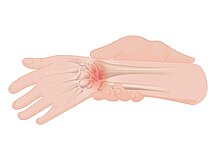**Classification and Types of Pain**:
– Pain can be classified based on features describing a patient’s pain, including the region of the body involved, the system causing the pain, duration, pattern, intensity, and cause.
– Chronic pain lasts a long time, while acute pain resolves quickly. Conditions like rheumatoid arthritis may lead to persistent pain.
– Allodynia involves experiencing pain from normally painless stimuli, such as cold, heat, touch, pressure, or pinpricks.
– Phantom pain, a type of neuropathic pain, is felt in amputated body parts, with a prevalence of nearly 82% in upper limb amputees and 54% in lower limb amputees.
– Breakthrough pain is transitory pain not alleviated by regular pain management, common in cancer patients and often managed with intensive opioid use.
**Impact and Functional Effects of Pain**:
– Pain can lead to impairments in attention control, working memory capacity, mental flexibility, problem-solving, and information processing speed.
– It is associated with increased depression, anxiety, fear, and anger, leading to direct physical distress, unemployment, financial difficulties, marital disharmony, and concentration issues.
– Acute physical pain may reduce negative affect, with participants often feeling better than those in non-painful conditions.
– Different theories, from early beliefs in vital fluid imbalances to modern nociceptor responses, explain the sensation and transmission of pain.
**Physiological Aspects of Pain**:
– Nociceptors respond to noxious stimuli, sending signals along nerve fibers to the spinal cord, with different types of ion channels determining specificity.
– Pain signals travel along A-delta and C fibers at varying speeds, carrying sharp and dull pain signals, respectively, to different regions of the brain.
– Chronic pain is described in sensory-discriminative, affective-motivational, and cognitive-evaluative dimensions, encompassing intensity, unpleasantness, and cognitive aspects of pain.
**Assessment and Measurement of Pain**:
– Pain thresholds are measured through quantitative sensory testing using various stimuli like electric current, thermal, mechanical, ischemic, or chemical stimuli.
– Self-report is the most reliable measure of pain, with healthcare professionals sometimes underestimating pain severity.
– Tools like the Visual Analogue Scale and the Multidimensional Pain Inventory aid in assessing pain intensity, psychosocial state, and deriving useful case descriptions.
– Pain assessment in non-verbal individuals involves observing behaviors like facial grimacing, guarding, changes in routine behavior, and mental status to communicate pain.
**Evolutionary and Behavioral Role of Pain**:
– Pain is a defense mechanism that triggers reflexive retraction from painful stimuli, protects affected body parts, and helps avoid harmful situations.
– People with congenital insensitivity to pain have reduced life expectancy, highlighting the crucial evolutionary and behavioral role of pain in protecting individuals from harm.
Pain is a distressing feeling often caused by intense or damaging stimuli. The International Association for the Study of Pain defines pain as "an unpleasant sensory and emotional experience associated with, or resembling that associated with, actual or potential tissue damage."
| Pain | |
|---|---|
 | |
| An illustration of wrist pain | |
| Specialty | Neurology Pain medicine |
| Symptoms | Unpleasant sensory and emotional sensations |
| Duration | Typically depends on the cause |
| Types | Physical, psychological, psychogenic |
| Medication | Analgesic |
Pain motivates organisms to withdraw from damaging situations, to protect a damaged body part while it heals, and to avoid similar experiences in the future. Most pain resolves once the noxious stimulus is removed and the body has healed, but it may persist despite removal of the stimulus and apparent healing of the body. Sometimes pain arises in the absence of any detectable stimulus, damage or disease.
Pain is the most common reason for physician consultation in most developed countries. It is a major symptom in many medical conditions, and can interfere with a person's quality of life and general functioning. People in pain experience impaired concentration, working memory, mental flexibility, problem solving and information processing speed, and are more likely to experience irritability, depression and anxiety.
Simple pain medications are useful in 20% to 70% of cases. Psychological factors such as social support, cognitive behavioral therapy, excitement, or distraction can affect pain's intensity or unpleasantness.
English
Etymology 1
From Middle English peyne, payne, from Old French and Anglo-Norman peine, paine, from Latin poena (“punishment, pain”), from Ancient Greek ποινή (poinḗ, “bloodmoney, weregild, fine, price paid, penalty”).





